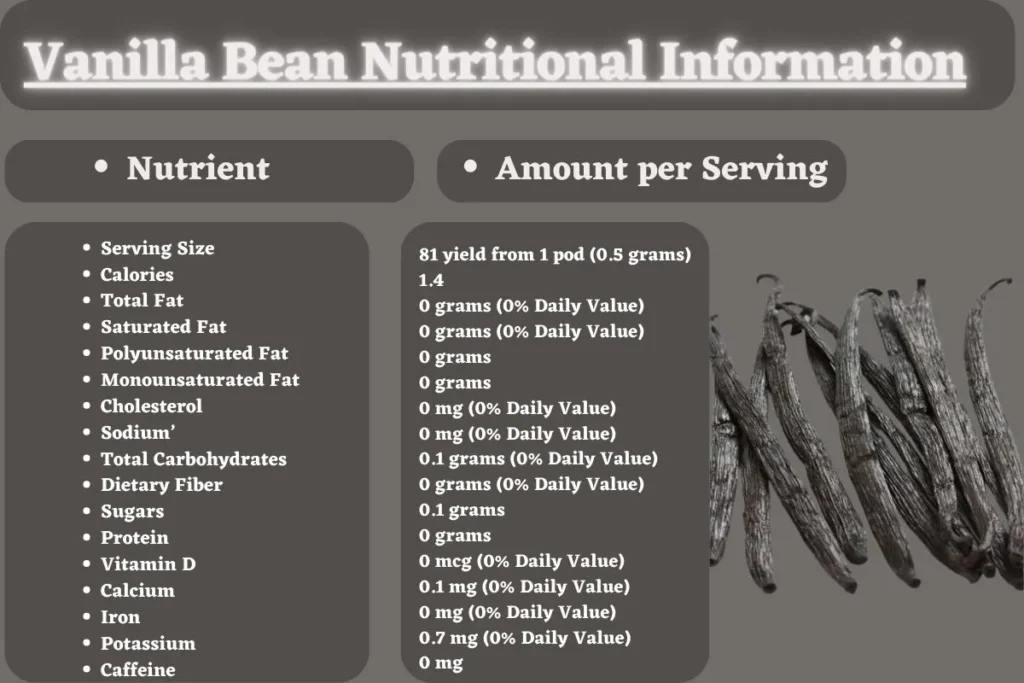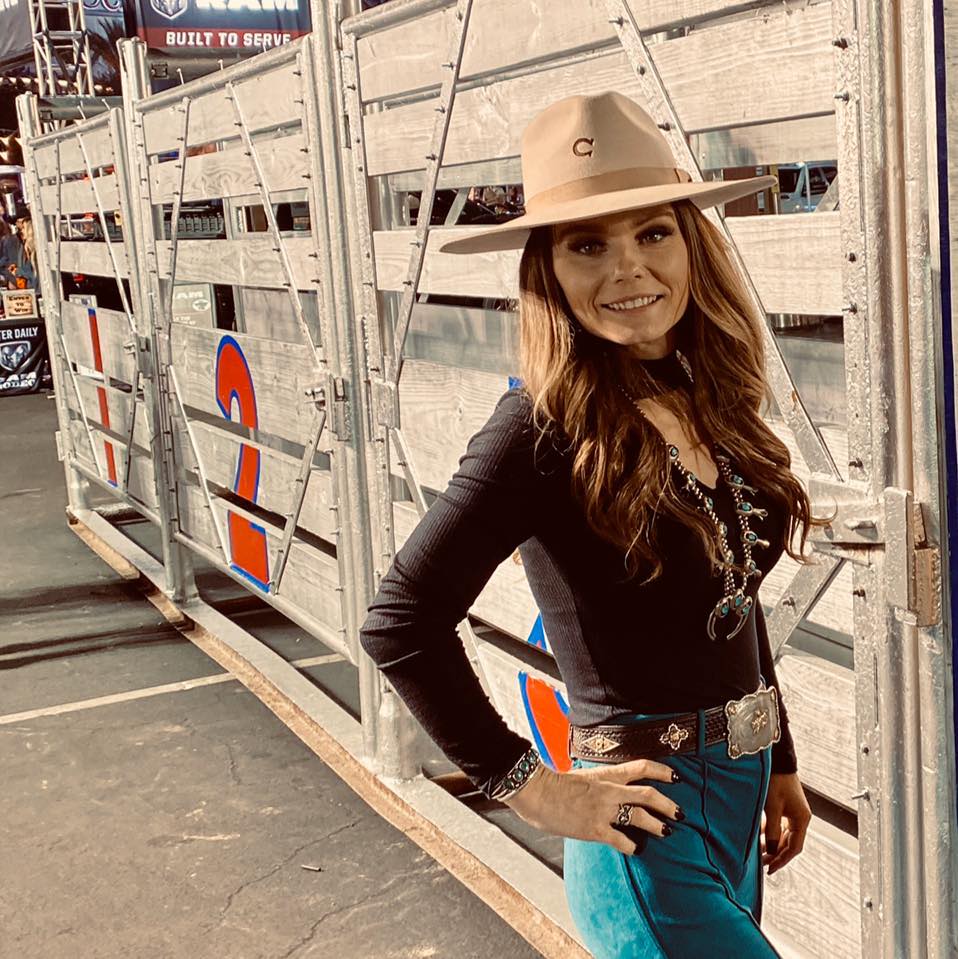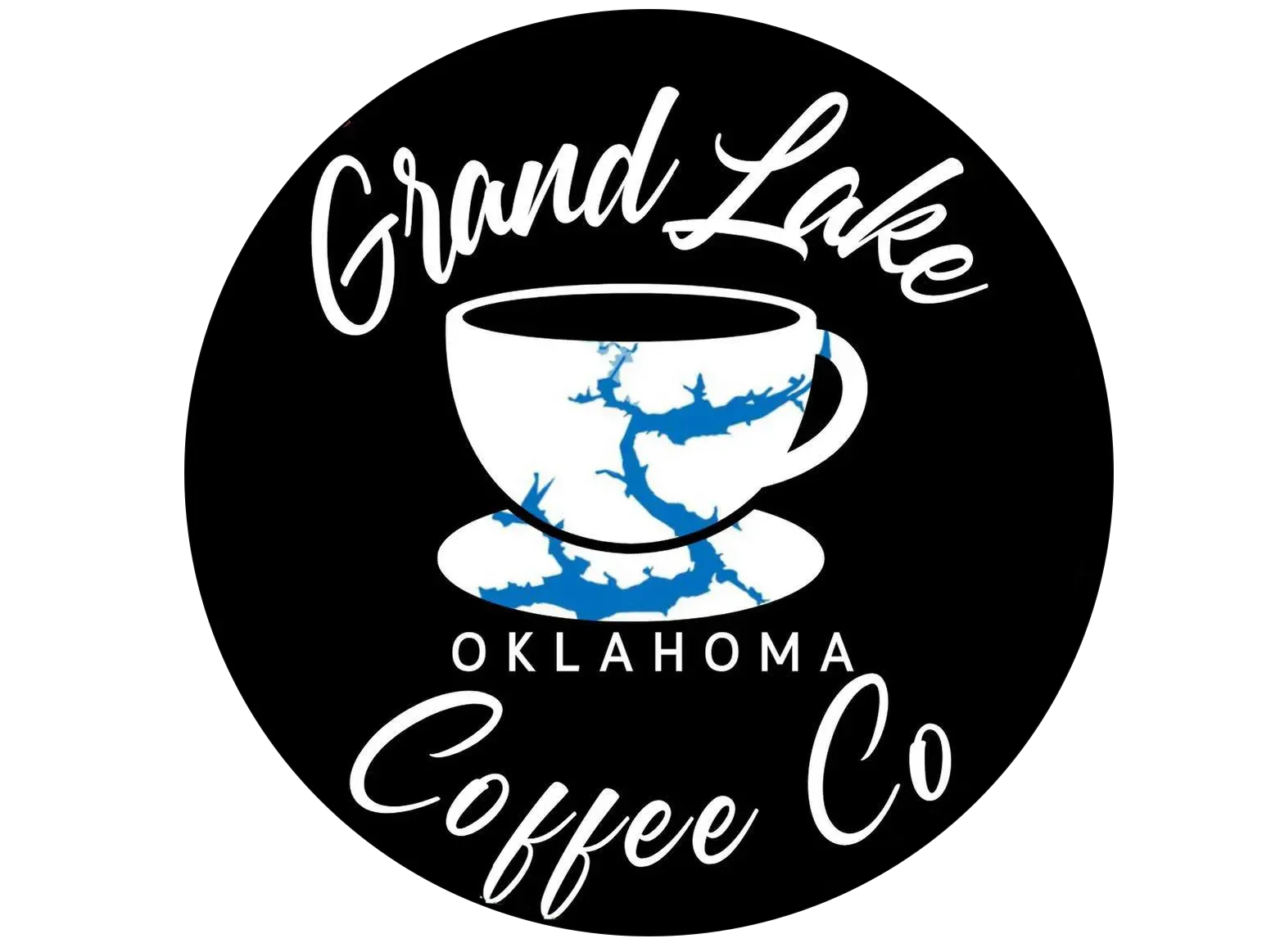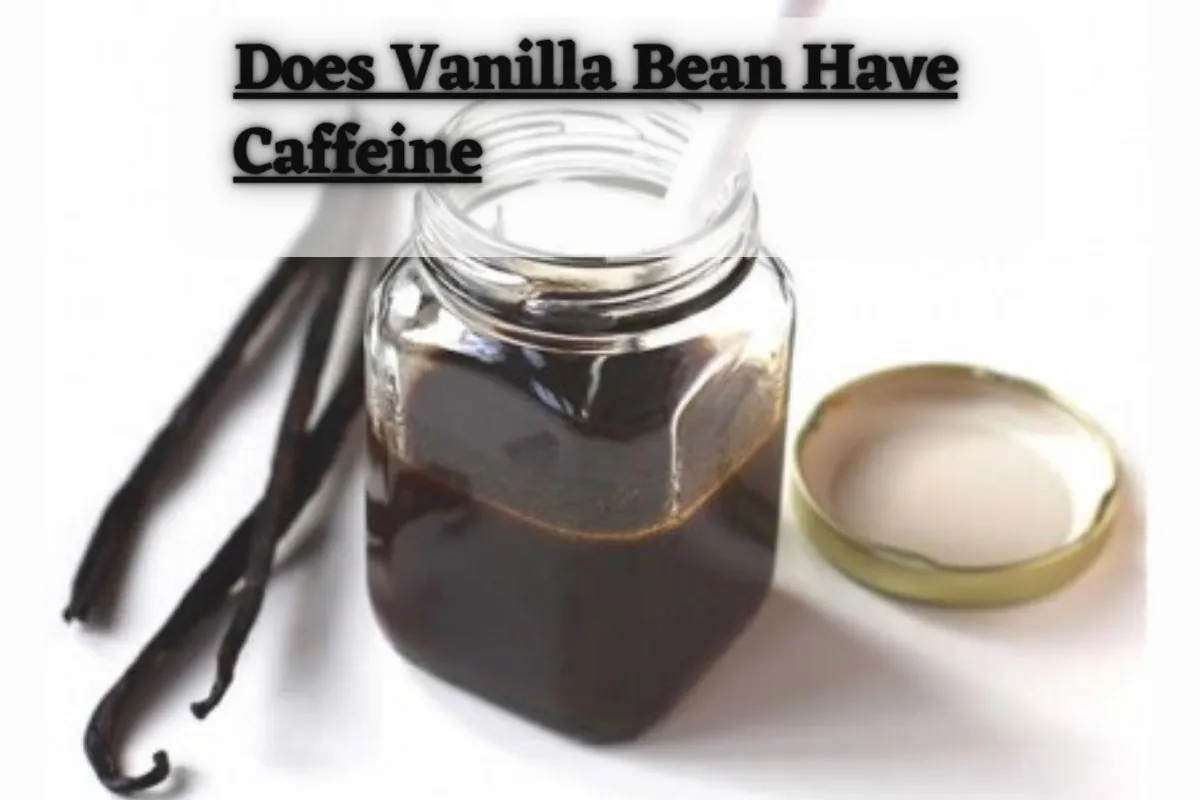Did you know that the beloved, sweet aroma of your favorite vanilla latte was originally treasured as a possible medicine by ancient civilizations? It might surprise you even more that this sought-after flavor comes from the painstakingly cultivated seed pods of a tropical orchid.
Now, with vanilla being such a familiar flavor, you might wonder if it shares the same stimulating properties as other popular plant-derived treats like coffee and chocolate. Does Vanilla Bean Have Caffeine? Let’s dive in and find out.
Importance of Knowing Caffeine Content in Vanilla Bean
Vanilla bean, derived from the meticulously cultivated orchid Vanilla planifolia, is a prized culinary ingredient renowned for its sweet, warm, and complex flavor profile. Its history stretches back to ancient Mesoamerican civilizations, where it was valued for its aroma and potential medicinal qualities.
While vanilla beans offer a delightful flavor experience, they do not possess any significant health benefits beyond their taste.
Knowing the caffeine content in vanilla beans is crucial, especially for individuals sensitive to caffeine, pregnant or breastfeeding women, and those with specific health conditions that necessitate caffeine restriction.
Accurate knowledge helps in managing overall caffeine intake, which is vital for avoiding caffeine dependence and withdrawal symptoms.
Furthermore, as vanilla bean is a common flavoring agent in various culinary and beverage products, understanding its caffeine contribution is essential for making informed dietary choices and for manufacturers aiming to cater to health-conscious consumers.
Does Vanilla Bean Have Caffeine?
No, vanilla beans in their pure form are naturally caffeine-free. The complex, sweet, and comforting flavor profile that makes vanilla wildly popular comes from a blend of organic compounds, primarily vanillin. This delicious flavor has no relation to the stimulating properties of caffeine.
So, why do people sometimes wonder if vanilla has caffeine? Here’s why:
The Sweetness Factor:
Many vanilla-flavored desserts and beverages are indulgent treats, often associated with other ingredients like coffee or chocolate that do contain caffeine. This connection can lead to the false assumption that vanilla itself is a stimulant.
Misleading Products:
Some commercially produced vanilla-flavored items might include additional caffeine ingredients. It’s essential always to check ingredient lists carefully.
Understanding that vanilla has no caffeine allows you to make informed decisions about your food and drink choices, especially if you aim to limit or avoid caffeine. Individuals with caffeine sensitivities or medical restrictions can confidently enjoy the flavor of vanilla without worry.
Vanilla Bean Variants and their Caffeine Content
There are several varieties of vanilla beans, and each has a distinct flavor and set of properties. Here are a few of the most popular varieties of vanilla beans:
Madagascar Vanilla Beans (Caffeine-free):
They are characterized by their rich, creamy flavor with sweet and floral notes. The benchmark for vanilla flavor is frequently thought to be Madagascar vanilla beans.
Tahitian Vanilla Beans (Caffeine-free):
The distinctive floral and delicious aroma of Tahitian vanilla beans sets them apart from other varieties, making them highly sought-after. They taste more subdued, with licorice and cherry undertones. Tahitian vanilla beans are often used in desserts and perfumes.
Mexican Vanilla Beans (Caffeine-free):
The robust and spicy flavor characteristic of Mexican vanilla beans is well-known, featuring undertones of nutmeg and cinnamon. They enhance the flavor of savory as well as sweet foods by providing nuance and complexity.
Ugandan Vanilla Beans (Caffeine-free):
Ugandan vanilla beans are becoming increasingly popular for their bold and robust flavor. Ugandan vanilla beans are prized by chefs and bakers for their intense flavor profile.
Indonesian Vanilla Beans (Caffeine-free):
Indonesian vanilla beans are known for their smoky and woody flavor profile, with hints of chocolate and tobacco.
Indian Vanilla Beans (Caffeine-free):
Known for their woody and spicy flavor, Indian vanilla is great for adding depth to both savory and sweet dishes. Its strong flavor profile is ideal for recipes that need a bold vanilla flavor.
West Indian Vanilla Beans (Caffeine-free):
These beans are characterized by their sweet and floral flavor, perfect for light and fruity desserts or tropical cocktails. Their delicate flavor makes them suitable for recipes requiring a mild vanilla flavor.
Papua New Guinea (PNG) Vanilla Beans (Caffeine-free):
PNG vanilla beans stand out for their unique flavor profile due to the ideal growing conditions of rich soil and abundant sun. They are becoming increasingly popular among chefs for their distinct taste.
Tongan Vanilla Beans (Caffeine-free):
These beans have a sweet, mellow, and creamy profile, making them great for a wide range of recipes, including both sweet desserts and savory dishes. Their smooth and creamy flavor is versatile for culinary uses.
List of Ingredients in Vanilla Bean
The list of ingredients in vanilla beans typically includes:
- Vanillin: the main ingredient giving vanilla its distinctive flavor.
- Ethyl Vanillin: Another aromatic molecule contributing to the flavor profile of vanilla.
- Piperonal: A compound that adds subtle spicy notes to the aroma of vanilla.
- Water: Vanilla beans contain moisture, which contributes to their plumpness and freshness.
- Cellulose: A plant-derived polysaccharide that forms part of the structural framework of the vanilla bean pod.
- Lignin: Another structural component found in the vanilla bean pod.
- Minerals: Trace amounts of minerals may be present in vanilla beans, depending on the soil and growing conditions.
- Volatile Compounds: Various volatile organic compounds contribute to the overall aroma of vanilla beans.
Vanilla Bean Nutritional Information

A single vanilla bean pod (approximately 0.5 grams) is incredibly low in calories, containing only about 1.4 calories. It offers zero fat (saturated, polyunsaturated, and monounsaturated ), cholesterol, and sodium.
Vanilla beans also contain negligible amounts of carbohydrates, dietary fiber, and sugar. It provides trace amounts of certain minerals like calcium, iron, and potassium. Importantly, vanilla beans are naturally caffeine-free.
| Nutrition Facts | Amount Per Serving |
| Serving Size | 1 yield from 1 pod (0.5 grams) |
| Calories | 1.4 |
| Total Fat | 0 grams (0% Daily Value) |
| Saturated Fat | 0 grams (0% Daily Value) |
| Polyunsaturated Fat | 0 grams |
| Monounsaturated Fat | 0 grams |
| Cholesterol | 0 mg (0% Daily Value) |
| Sodium | 0 mg (0% Daily Value) |
| Total Carbohydrates | 0.1 grams (0% Daily Value) |
| Dietary Fiber | 0 grams (0% Daily Value) |
| Sugars | 0.1 grams |
| Protein | 0 grams |
| Vitamin D | 0 mcg (0% Daily Value) |
| Calcium | 0.1 mg (0% Daily Value) |
| Iron | 0 mg (0% Daily Value) |
| Potassium | 0.7 mg (0% Daily Value) |
| Caffeine | 0 mg |
Read Also:
👉Does Ryze Coffee Have Caffeine
Alternatives to Vanilla Bean and their Caffeine Content
While nothing can perfectly reproduce the intricate flavor of pure vanilla bean, these alternatives offer varying degrees of warmth, sweetness, and complementary notes that can work beautifully in different recipes.
Tonka Beans:
These beans contain coumarin, a compound that delivers a complex aroma blending vanilla, almond, sweet cherry, caramel, and a hint of spice. They make a wonderful substitute in custards, ice creams, and other desserts.
Cassia Bark:
This is the more readily available type of cinnamon. Its familiar warmth and sweetness have a similar undertone to vanilla but also possess a touch of spiciness. It works well in baked goods and adds a delightful depth to warm beverages.
Almond Extract:
The sweet, nutty essence of almond complements the subtle nutty notes often found in vanilla. Use it cautiously in baking, desserts, and even some savory dishes for a touch of vanilla-like warmth.
Maple Syrup:
While distinctly maple in flavor, maple syrup offers a rich sweetness and a touch of caramel that complements baked goods and sauces. Consider using it as a partial replacement for vanilla in pancakes, waffles, or sweet bread.
Honey:
A natural sweetener with beautiful floral notes. Choose varieties with warmer, amber tones for a closer flavor profile to vanilla. Honey enhances baked goods, oatmeal, and can be drizzled over yogurt or fruit for a touch of sweetness.
Vanilla Paste:
This offers the best approximation of real vanilla. It’s made from vanilla beans and contains the tiny specks characteristic of pure vanilla. Substitute it in most recipes where vanilla bean is called for.
Dried Coconut:
Provides subtle sweetness with tropical undertones. Toasted coconut adds an extra dimension. It works as a partial substitute for vanilla in some cookies, granolas, or desserts.
Rose Water:
This floral essence adds a delicate aroma. Use it sparingly for a subtle, perfumed note that can complement the floral hints found in vanilla, especially in delicate cakes and custards.
Orange Blossom Water:
Similar to rose water, it imparts a delicate citrusy-floral aroma. Use it very sparingly in specific recipes where its delicate notes can enhance other flavors.
Saffron:
A precious and expensive spice, offering a complex flavor with earthy, floral hints and a subtle honey-like sweetness. Use just a few threads in very special recipes where a unique, luxurious depth of flavor is desired.
| Alternative | Caffeine Content |
| Tonka Beans | Caffeine-free |
| Cassia Bark | Caffeine-free |
| Almond Extract | Caffeine-free |
| Maple Syrup | Caffeine-free |
| Honey | Caffeine-free |
| Vanilla Paste | Caffeine-free |
| Dried Coconut | Caffeine-free |
| Rose Water | Caffeine-free |
| Orange Blossom Water | Caffeine-free |
| Saffron | Caffeine-free |
Conclusion
Pure vanilla beans and vanilla extract derived from them offer a delicious and complex flavor profile without any of the stimulating effects of caffeine.
This makes vanilla a fantastic choice for adding warmth and sweetness to desserts, drinks, and even some savory dishes, especially if you’re looking for a relaxing treat or have any concerns about caffeine consumption.
So, the next time you crave a cozy vanilla latte or a sweet vanilla cookie, savor the flavor guilt-free, knowing you’re enjoying a naturally caffeine-free indulgence!
Frequently Asked Questions
Q1. What exactly is a vanilla bean?
A vanilla bean is the long, slender seed pod of the vanilla orchid, a tropical vine in the genus Vanilla planifolia. After a labor-intensive process of hand-pollination, harvesting, and curing, these pods develop their rich, complex aroma and the hallmark vanilla flavor we know and love.
Q2. Where do vanilla beans come from?
Although native to Mexico, Madagascar is now the largest producer of vanilla beans. Other significant cultivation regions include Indonesia, Papua New Guinea, Tahiti, India, and Uganda.
Q3. What’s the difference between vanilla extract and vanilla bean?
Vanilla extract is made by soaking vanilla beans in alcohol, which extracts their flavor compounds. It’s a concentrated and convenient way to add vanilla flavor. Vanilla beans offer the purest, most nuanced vanilla flavor, and you can even see the tiny seeds within the pod, adding visual appeal.
Q4. Are vanilla beans healthy?
While vanilla beans aren’t a major source of nutrients, they offer trace amounts of minerals and contain beneficial antioxidants. Primarily, vanilla beans contribute delightful flavor and aroma.
Q5. Is artificial vanilla a good substitute for real vanilla beans?
Artificial vanilla flavoring attempts to mimic the main flavor compound of vanilla beans, vanillin. However, it lacks the depth and complexity achieved by the hundreds of other flavor compounds found in real vanilla beans. For the best flavor, opt for pure vanilla extract or real vanilla beans.

Rossi Glover, the passionate Owner of Grand Lake Coffee, infuses every cup with her love for coffee and dedication to quality. With an extensive background in the art and science of coffee, Rossi is not just a connoisseur but a storyteller, sharing the intricate tales behind each brew.

